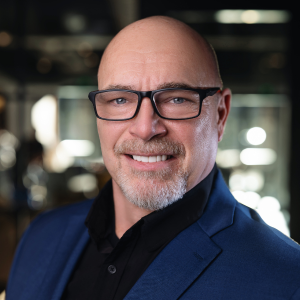What to Look for When Buying Disinfection Solutions for Senior Care Settings
Wheelchairs, commodes, carts, and more are used daily in senior care communities, posing an ongoing cleaning and disinfection challenge. Senior care communities must meet standards for cleaning and disinfecting such medical equipment, but given staffing shortages, stretched budgets, and increasing quality of care metrics, the challenge of meeting these standards is only increasing.
Fortunately, alternatives exist. Thanks to evolving technology, senior care communities can access disinfection solutions with the capabilities of solving disinfection and cleaning challenges. But for a senior care community to get maximum value from an investment in disinfection technology, that product must fit the community’s needs.
Where Manual Cleaning Comes Up Short

Karl Soderquist, president of The HUBSCRUB Company
Many senior care communities rely on manually cleaning patient care equipment like wheelchairs, but depending on staff to manually clean a community’s equipment poses several problems. Karl Soderquist, president of The HUBSCRUB Company, describes a situation where a facilities person pressure washing nursing home wheelchairs did so with varying results. “He would take five wheelchairs into the parking lot and by the time he got to the fifth wheelchair, he’d be using a different process,” he says.
Such a situation is a stark reminder of how manual cleaning can yield inconsistent and unacceptable results. Human error is a concern, and if staff misuse cleaning and disinfectant products, such as by not following the required exposure time, their efforts may be ineffective. Additionally, items like wheelchairs are somewhat awkward to clean, so surfaces may be easily missed or only partially cleaned. With as many as 1 in 10 and 1 in 25 patients in U.S. and Canadian hospitals being affected by health care-associated infections which can be spread by equipment like wheelchairs, the inconsistencies of manual cleaning can have significant health implications.
Time limitations can also reduce cleaning capabilities and thoroughness. “Time is a challenge,” Soderquist adds. “Nurses today are short staffed, and they don’t have time to do a thorough cleaning. If they do anything, they’ll usually wipe down the top of the arms and maybe touch the handle where the brake is. That’s it.”
Staff are already overworked in many senior care communities. Adding cleaning and disinfecting responsibilities onto a workload may not be feasible, or it could frustrate and contribute to an already heavy work burden. Using a technology-based cleaning and disinfection solution is a more practical option.
How Technology Helps
Technology-based cleaning and disinfection solutions, like HUBSCRUB, remove human error from the equation. “HUBSCUB is thorough in hitting all of the places on the wheelchair,” Soderquist explains. The machine can be set up and left to perform the cleaning and disinfecting process, significantly reducing staff time and responsibility involved in cleaning medical equipment.
Additionally, since HUBSCRUB can be set to use particular cleaning products and disinfectants, the process of applying disinfectant and ensuring proper exposure time is automated. There’s no worry that staff will be unfamiliar with a disinfectant or make mistakes with its use.
How to Choose the Right Disinfection Technology
Given that there are several technology-based disinfection solutions on the market, it’s essential that a senior care community carefully consider how a product works and how it will fit into their daily operations. Doing so can help the community invest in the product that will best meet their needs and solve the challenges.
Senior care communities should weigh the following factors.
Effectiveness
It’s important to evaluate metrics for a product’s success in cleaning and disinfecting equipment. Some of those metrics may be features-related. For example, look for a product that can operate at higher PSI settings. “Pressure is important when you’re cleaning or disinfecting,” says Soderquist. Look for a product capable of spraying 40 to 50 PSI, a pressure strong enough to easily remove peanut butter from surfaces in a short period of time.
Additionally, HUBSCRUB has a proven label of effectiveness. The Cleveland Clinic tested the product and created a report confirming its washing, rinsing dry aid and ultraviolet (UV) disinfection kills C-difficile, MRSA, and CRE in seven minutes.
Versatility
Consider whether a product can work with different cleaning and disinfection solutions, or whether the community will be limited to only using certain products. “A lot of facilities have already purchased a particular disinfectant that they’re familiar with,” says Soderquist. A machine that can’t work with those products, or that can’t be easily adjusted to accommodate those products, will restrict cleaning capabilities and may require a senior care community to order additional cleaning products.
HUBSCRUB can be programmed to work with any disinfectant or cleanser. Soderquist notes that his team will talk with a community and ask for details about the products they’re using, their mix ratios, and their exposure times. When the HUBSCRUB system arrives at the community, it’s ready to work. The machine can also be easily adjusted if cleaner or disinfectant manufacturers change mix ratios or exposure times.
Ease of Use
It’s also essential to consider a machine’s overall ease of use. Think about the training process for employees, as well as the amount of time employees will need to spend operating the machine. The length of the cleaning and disinfecting cycles for each piece of equipment can also impact the machine’s productivity.
Mobility
Think about whether a machine will be limited to a certain location, or if it can be moved, increasing access to the machine. Multi-level senior care communities, in particular, will need a machine that can be easily transported, since bringing equipment up and down levels to be disinfected is impractical and time-consuming. “Since HUBSCRUB is easy to move, if you were to bring it up on the elevator to the second floor, chances are the equipment on that floor will get more frequent cleaning,” says Soderquist.
If a machine is heavy or requires customized plumbing or electrical hookups, its mobility will be limited. While HUBSCRUB is lightweight, it also doesn’t need any special electricity or very hot water. Such a design gives it the convenience of being mobile, so it doesn’t necessarily have to be stationed in one particular location.
Technical support
Evaluate the type and accessibility of technical support available for a product, too. Soderquist explains that with HUBSCRUB Connect, HUBSCRUB technical support can dial into a product’s system and determine the technical problem. While HUBSCRUB’s phone technical support is so knowledgeable that HUBSCRUB Connect is a backup, having these multiple support layers helps to ensure prompt troubleshooting so the machine can be quickly operational.
Enjoying the Benefits of Technological Disinfection Solutions
Using technology-based disinfection products can increase accuracy and thoroughness. By removing the job of cleaning and disinfecting equipment from staff’s responsibilities, these products can also result in better job satisfaction, leaving staff to focus on other tasks that require their attention.
But most importantly, using technology like HUBSCRUB can help keep residents and staff safe. Thorough and regular disinfection and cleaning can help to prevent disease spread, amounting to increased resident and staff safety and improved quality of care.

Paige Cerulli is a contributing writer to i Advance Senior Care.
Related Articles
Topics: Facility management , Featured Articles , General Technology , Infection control , Operations , Risk Management , Staffing











